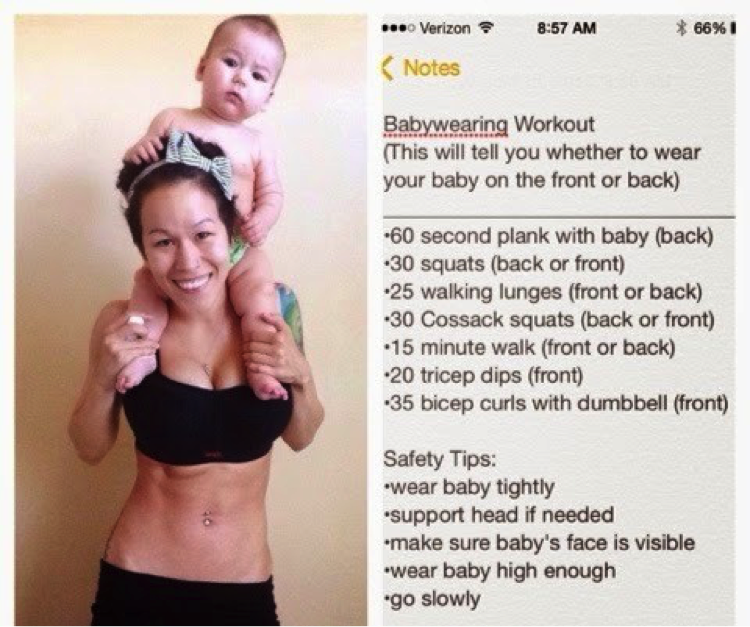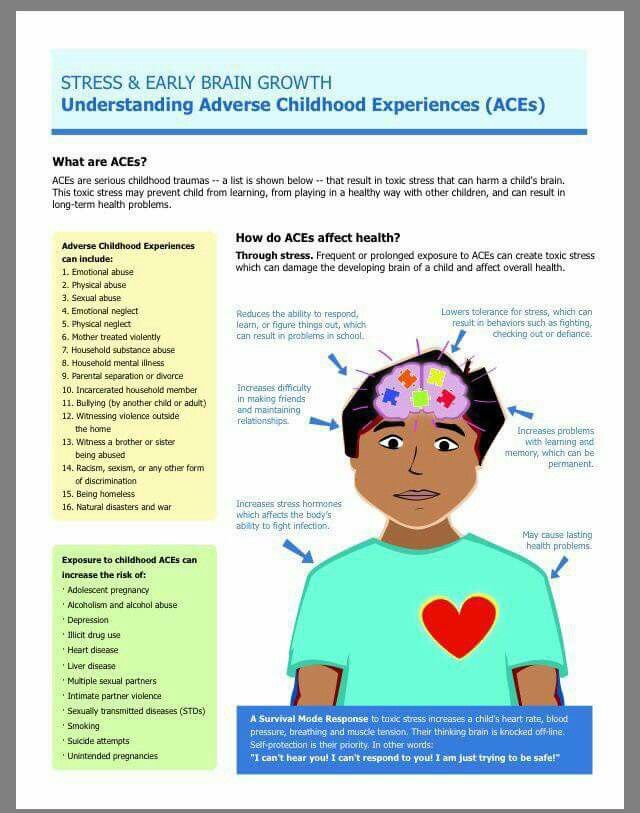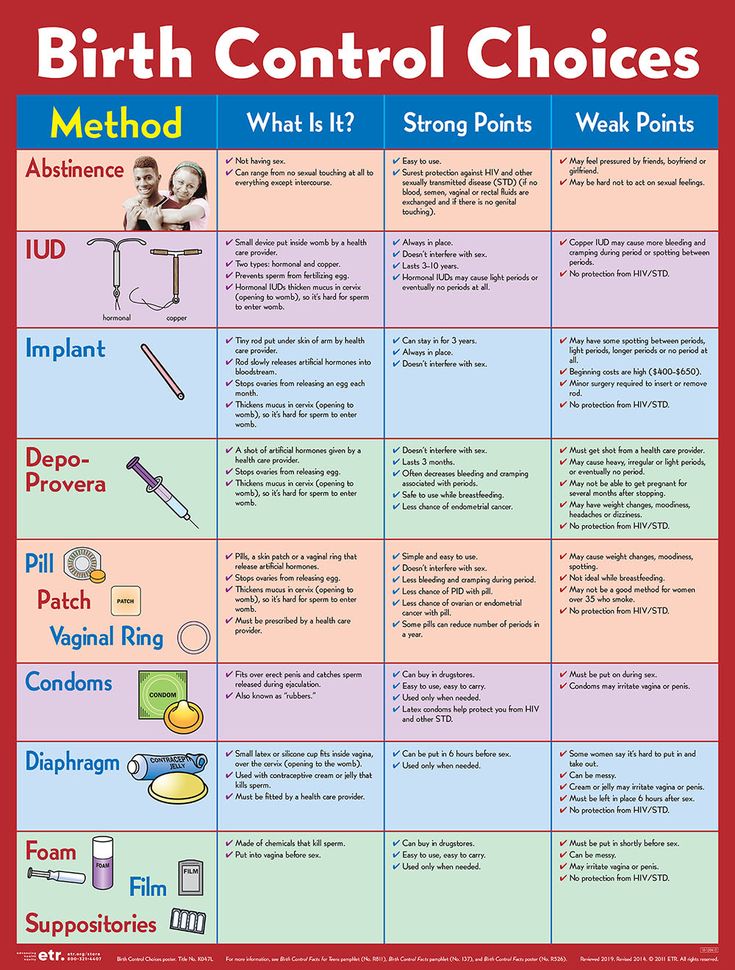Signs of imminent delivery
The Most Common Signs Labor is Imminent
It’s the final countdown – after months of prep and planning, you’re finally in the home stretch of the pregnancy. And while these final weeks are filled with excitement and anticipation of the birth, it can be equally met with uncertainty over the unknown. When will I go into labor? In spite of the many secrets medical science has unlocked, we still don’t know exactly what sets things into motion for labor.
There are, however, a number of signs that labor is imminent – the understanding of which can hopefully pave the way for a smoother, more empowered birth.
Common signs of imminent labor
You are having more contractions.
Braxton Hicks contractions are common throughout pregnancy and generally aren’t cause for concern, but in the final weeks of pregnancy, they may become more frequent. They are typically described as irregular in intensity, infrequent, non-rhythmic, then taper off and disappear. You may feel discomfort similar to menstrual cramps during this process. It’s important to take special care to stay hydrated in the final weeks of pregnancy as well; dehydration can lead to more frequent contractions and, in turn, preterm labor.
Your cervix is changing.
Those Braxton Hicks contractions are for a purpose – they help your cervix begin to thin and widen, or dilate, to prepare for labor. In second and subsequent pregnancies, the cervix will often dilate a centimeter or two before labor begins. However, even at 40 weeks pregnant and one centimeter dilated, there is no guarantee that labor will begin imminently. As the cervix continues to dilate, you may pass your mucus plug. This is a small amount of thickened mucus that blocks the cervical canal during pregnancy. It may appear at one time or in the form of a discharge over several days, and it’s a good indication that labor is not far off.
Your water breaks.
One of the most obvious signs that labor is imminent is the breaking of the amniotic sack that has been surrounding the baby throughout the pregnancy. Rupturing can present as a single rush of fluid, or it can be a slow trickle over several hours. If you suspect it has broken, it’s important to contact your doctor or midwife for further instruction whether contractions have started or not. If the sac is no longer intact, there is a greater risk for infection and labor may need to be induced.
Rupturing can present as a single rush of fluid, or it can be a slow trickle over several hours. If you suspect it has broken, it’s important to contact your doctor or midwife for further instruction whether contractions have started or not. If the sac is no longer intact, there is a greater risk for infection and labor may need to be induced.
Can my doctor tell if I’m going into labor soon?
Not with 100 percent accuracy. Unless there are regular, active uterine contractions, only a best guess can be made. Your doctor or midwife can, however, use a few different measurements to determine if the baby is in optimal position for the upcoming delivery. First, they will confirm if the baby is in the occiput anterior position, which is head down and facing the mother’s back. This is considered the ideal placement for delivery, though occiput posterior – head down, facing front – and even breech position, where the baby’s feet or buttocks are down, can be acceptable for delivery. This is important information to have; if the baby is breech, the doctor may try to turn the baby or a c-section may ultimately be recommended.
This is important information to have; if the baby is breech, the doctor may try to turn the baby or a c-section may ultimately be recommended.
What station is the baby engaged?
This is another factor your medical practitioner will consider in the final weeks of pregnancy. Fetal station is the where the baby is presenting in your pelvis - the part of the baby that leads the way through the birth canal. This is usually the head, but it can also be the buttocks, feet, or even a shoulder.
When the baby’s head is level with the ischial spines – the bony protrusions in the narrowest part of the pelvis - the fetal station is zero. Each change in number typically signifies that the baby has descended another centimeter into the pelvis.
Your medical practitioner will examine the cervix to determine the lowest part of the baby in relation to your pelvis.
A number from -5 to +5 (sometimes -3 to +3) is assigned to describe where the baby’s presenting part is located. The baby station chart breaks down to:
The baby station chart breaks down to:
Score of -5 to 0: The “presenting” or part of the baby that can be felt is above the ischial spines, or nothing can be felt at all. This is also called “floating.”
Score of zero: The baby’s head is considered “engaged” or aligned with the ischial spines at zero station.
Score of 0 to +5: Once the baby has descended beyond the ischial spines, positive numbers are used. At birth, the baby is at +4 to +5 station.
While the number is an estimate, the baby will typically drop into the birth canal about two weeks before delivery.
Paying close attention to certain signs and signals your body may be giving you can provide clues to how close you are to the big day. Visit our blog for more tips and information about your pregnancy every step of the way.
8 Signs That Labor Is 24 to 48 Hours Away – Cleveland Clinic
When you’re close to your baby’s due date, each day that passes can feel like 100. Time becomes relentless — just like calls from well-meaning loved ones asking if you’re still pregnant. You need a sign (anything!) to signal that labor is near. But do signs that labor is 24 to 48 hours away exist?
Time becomes relentless — just like calls from well-meaning loved ones asking if you’re still pregnant. You need a sign (anything!) to signal that labor is near. But do signs that labor is 24 to 48 hours away exist?
“There are no real rules with labor. It is completely variable. If you take 10 women, you’re going to get 10 different stories about what it was like for them before they went into labor — even between pregnancies,” says Ob/Gyn Jonathan Emery, MD.
But take heart! Dr. Emery says there are four early signs of labor that may just happen to you.
Four early signs of labor
Signs that labor is imminent are a bit of a moving target. There’s no step-by-step list of how it all goes down, and the only thing you can count on is that your experience will be unique to you.
“The frequency and intensity of contractions determines labor,” says Dr. Emery. “But there are some physical symptoms that happen during that time.”
Advertising Policy
1.
 Cramps
CrampsSome women feel the type of cramps that usually happen with menstruation. “These cramps are different than Braxton Hicks, which are usually painless false contractions that happen when the uterus tightens,” explains Dr. Emery. “These period-like cramps may be the beginning of mild contractions. They’re not too painful, but they’re noticeable. They may come and go over hours or even a couple of days.”
2. Pelvic pressure
You may start to feel pressure in your vagina or pelvis. “This may be due to ‘lightening,’ which is when the baby drops down from the abdomen. Some women feel lightening as pelvic pressure or even low back pain,” says Dr. Emery. “But keep in mind that some women don’t experience this drop until they’re in actual labor.”
3. Loss of the mucus plug
Some women notice a change in their vaginal discharge, which may signal the passing of their mucus plug. The mucus plug is an accumulation of mucus that forms a seal over the cervix’s opening. It helps protect the baby from unhealthy bacteria outside of the uterus. As the cervix starts opening in preparation for labor, you may lose the mucus plug (also called bloody show) in one blob or gradually.
It helps protect the baby from unhealthy bacteria outside of the uterus. As the cervix starts opening in preparation for labor, you may lose the mucus plug (also called bloody show) in one blob or gradually.
“Decades ago, people used to think that if a woman passed her mucus plug, it meant that she would be in labor in a certain number of days. But now we know that it can be nonspecific. You can lose the mucus plug, not go into labor, and the mucus can even re-accumulate in the cervix.”
Advertising Policy
4. Changes in your vaginal discharge
Even if the mucus plug stays intact, you may notice other changes to your vaginal discharge. “It can become more watery, stickier and thicker, or maybe a little pink before labor begins or at the early stages of labor,” says Dr. Emery.
Other signs labor could be near
Dr.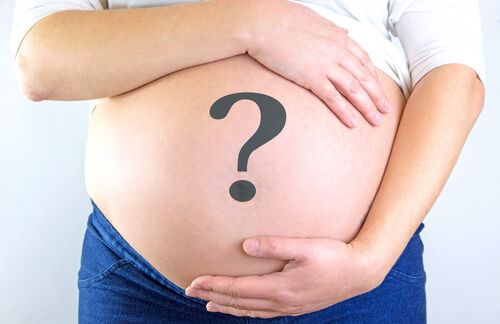 Emery says that while there are other potential signs of labor, they have less real science to back them up. These signs of labor include:
Emery says that while there are other potential signs of labor, they have less real science to back them up. These signs of labor include:
- Fatigue.
- Lightning crotch pain (sharp, burning or shooting nerve pain in your pelvis caused by your baby’s position).
- Loose stools or diarrhea.
- Sudden burst of energy (which Dr. Emery says is often associated with nesting, or the strong desire to get your home ready for baby).
“One or more of these labor signs might happen for some women, but there’s no clear evidence that they’re related to pre-labor or early labor.”
What to do if you think you’re in labor
If you think labor has started, Dr. Emery says you should time your contractions. When they are happening every five minutes and are so strong that you can’t walk or talk, call your prenatal provider. The waiting game is finally over!
Harbingers - childbirth is coming soon!
Wrestler Maria Vladimirovna
Obstetrician-gynecologist
MD GROUP Clinical Hospital, Mother and Child Clinic Savelovskaya
False contractions
They may appear after the 38th week of pregnancy. False contractions are similar to Braxton-Hicks contractions, which a woman could already feel starting from the second trimester of pregnancy (the uterus seems to stiffen for a few seconds - a couple of minutes, then the tension in it subsides). False contractions train the uterus before childbirth, they are irregular and painless, the intervals between them are not reduced. Real labor pains, on the contrary, are regular, their strength gradually increases, they become longer and more painful, and the intervals between them are reduced. That's when you can already say that the birth began for real. In the meantime, false contractions are going on, it is not necessary to go to the maternity hospital - you can easily survive them at home.
False contractions are similar to Braxton-Hicks contractions, which a woman could already feel starting from the second trimester of pregnancy (the uterus seems to stiffen for a few seconds - a couple of minutes, then the tension in it subsides). False contractions train the uterus before childbirth, they are irregular and painless, the intervals between them are not reduced. Real labor pains, on the contrary, are regular, their strength gradually increases, they become longer and more painful, and the intervals between them are reduced. That's when you can already say that the birth began for real. In the meantime, false contractions are going on, it is not necessary to go to the maternity hospital - you can easily survive them at home.
Abdominal prolapse
Approximately two to three weeks before birth, the baby, in preparation for birth, presses the presenting part (usually the head) against the lower part of the uterus and pulls it down. As a result, the uterus moves lower into the pelvic region, its upper part ceases to put pressure on the internal organs of the chest and abdominal cavity. In the people it is called - the stomach dropped. As soon as the stomach drops, the expectant mother notices that it has become easier for her to breathe, but, on the contrary, it becomes more difficult to sit and walk. Heartburn and belching also disappear (after all, the uterus no longer presses on the diaphragm and stomach). But, having dropped down, the uterus begins to put pressure on the bladder - naturally, urination becomes more frequent.
In the people it is called - the stomach dropped. As soon as the stomach drops, the expectant mother notices that it has become easier for her to breathe, but, on the contrary, it becomes more difficult to sit and walk. Heartburn and belching also disappear (after all, the uterus no longer presses on the diaphragm and stomach). But, having dropped down, the uterus begins to put pressure on the bladder - naturally, urination becomes more frequent.
For some, uterine prolapse causes a feeling of heaviness in the lower abdomen and even slight pain in the area of the inguinal ligaments. These sensations arise due to the fact that the child's head, moving down, irritates the nerve endings of the pelvic organs.
During the second and subsequent births, the belly drops later - right before the birth. It happens that this harbinger of childbirth is not at all.
Removal of the mucous plug
This is one of the main and obvious harbingers of childbirth. During pregnancy, the glands in the cervix produce a secret (it looks like a thick jelly and forms the so-called cork), which prevents various microorganisms from entering the uterine cavity. Before childbirth, under the influence of estrogens, the cervix softens, the cervical canal opens slightly and the cork can come out - the woman will see that there are mucus clots on the linen that look like jelly. Cork can be of different colors - white, transparent, yellowish-brown or pink-red. Often it is stained with blood - this is completely normal and may indicate that childbirth will occur within the next day. The mucus plug can come out all at once (at once) or come out piecemeal throughout the day.
Before childbirth, under the influence of estrogens, the cervix softens, the cervical canal opens slightly and the cork can come out - the woman will see that there are mucus clots on the linen that look like jelly. Cork can be of different colors - white, transparent, yellowish-brown or pink-red. Often it is stained with blood - this is completely normal and may indicate that childbirth will occur within the next day. The mucus plug can come out all at once (at once) or come out piecemeal throughout the day.
Weight loss
Approximately two weeks before delivery, weight loss may occur, usually by 0.5–2 kg. This happens because excess fluid is removed from the body and swelling decreases. If earlier during pregnancy, under the influence of the hormone progesterone, fluid in the body of a pregnant woman accumulated, now, before childbirth, the effect of progesterone decreases, but other female sex hormones - estrogens - begin to work hard, they remove excess fluid from the body of the expectant mother.
In addition, the expectant mother often notices that at the end of pregnancy it became easier for her to put on rings, gloves, shoes - this means that swelling on the hands and feet has decreased.
Change of stool
Right before childbirth, hormones often act on the intestines - they relax its muscles, as a result, stool disorder begins. Sometimes such frequent (up to 2-3 times a day) and even loose stools are mistaken for an intestinal infection. But if there is no nausea, vomiting, discoloration and smell of feces, or any other symptoms of intoxication, you should not worry: this is one of the harbingers of the upcoming birth.
And on the eve of childbirth, you often don't feel like eating at all. All this is also the preparation of the body for natural childbirth.
Mood changes
Many women experience mood changes a few days before giving birth. The expectant mother gets tired quickly, she wants to have more rest, sleep, even some kind of apathy appears.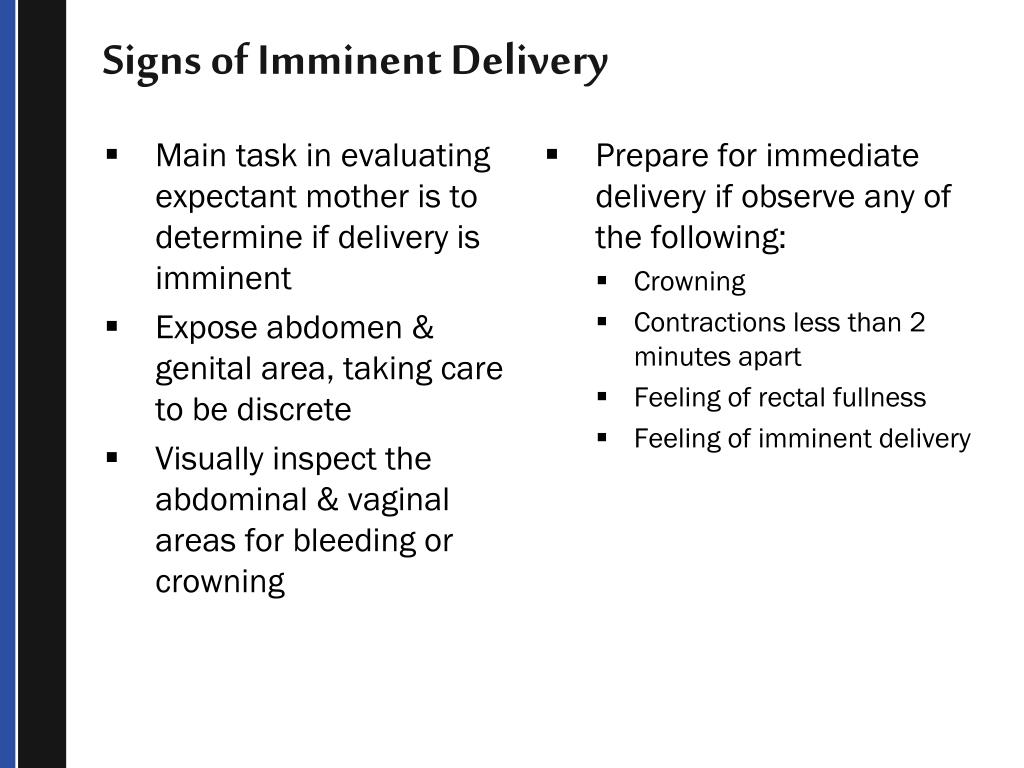 This state is quite understandable - you need to gather strength to prepare for childbirth. Often, just before giving birth, a woman wants to retire, looking for a secluded place where you can hide and focus on yourself and your experiences.
This state is quite understandable - you need to gather strength to prepare for childbirth. Often, just before giving birth, a woman wants to retire, looking for a secluded place where you can hide and focus on yourself and your experiences.
What should I do if there are any signs of childbirth? Usually you don’t need to do anything, because the harbingers are completely natural, they just say that the body is rebuilding and preparing for the birth of a child. Therefore, you should not worry and go to the hospital as soon as, for example, training contractions have begun or the mucous plug has come off. We must wait for real labor pains or outpouring of water.
Make an appointment
to the doctor - Borets Maria Vladimirovna
By clicking on the send button, I consent to the processing of personal data
01/26/2018
IVF failures: embryological stage
Wrestler Maria Vladimirovna
Signs of approaching labor
Signs of impending labor
Sagging belly
A woman may notice that her belly has moved down. The “lowering” of the abdomen occurs due to the lowering and insertion of the presenting part of the fetus into the entrance of the small pelvis and the deviation of the bottom of the uterus forward due to some decrease in the tone of the abdominal press. In primiparas, this is observed 2–4 weeks before delivery. In multiparous - on the eve of childbirth.
The “lowering” of the abdomen occurs due to the lowering and insertion of the presenting part of the fetus into the entrance of the small pelvis and the deviation of the bottom of the uterus forward due to some decrease in the tone of the abdominal press. In primiparas, this is observed 2–4 weeks before delivery. In multiparous - on the eve of childbirth.
Breathing becomes easier
Moving the baby down relieves pressure from the diaphragm and stomach. Breathing becomes easier. Heartburn may go away. This increases the pressure on the lower abdomen. Sitting and walking becomes a little more difficult. After the child has moved down, the woman may experience difficulty sleeping, it is difficult to find a comfortable position.
Frequent urination and defecation
The urge to urinate becomes more frequent as the pressure on the bladder increases. The hormones of childbirth also affect the intestines of a woman, causing the so-called preliminary cleansing.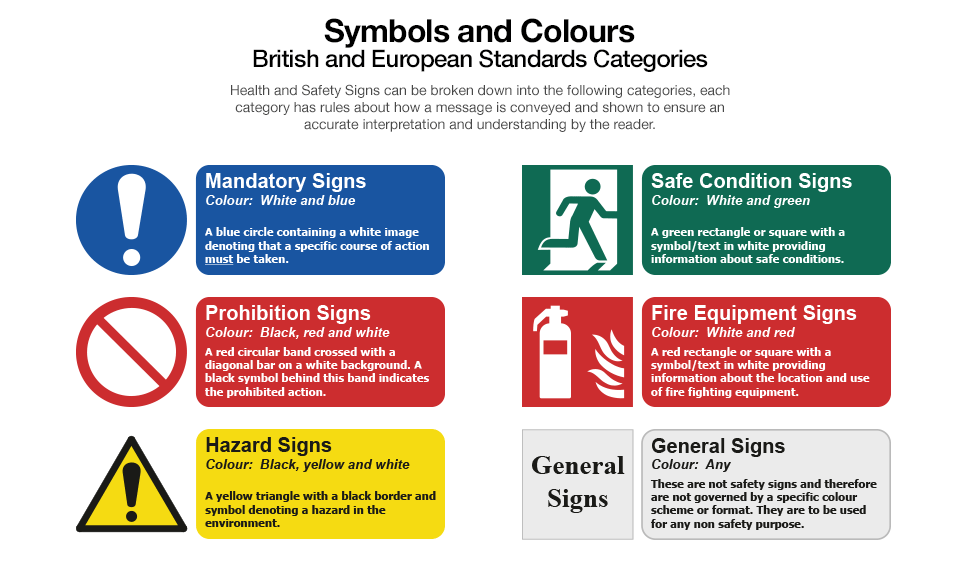 Some women may experience mild abdominal cramps and diarrhea.
Some women may experience mild abdominal cramps and diarrhea.
Pain in the lower back
After the child has moved down, the woman may experience discomfort in the lumbar region. These sensations are caused not only by pressure from the child, but also by an increase in the stretching of the sacroiliac connective tissue.
Change in appetite
Appetite may change just before childbirth. Most of the time it decreases. It is good if a woman at this time trusts her intuition more when choosing products. You shouldn't eat for two.
Weight loss
A woman may lose some weight before giving birth. The body weight of a pregnant woman can decrease by about 1-2 kg. So the body naturally prepares for childbirth. Before childbirth, the body must be flexible and plastic.
An unexpected change of mood
A woman is looking forward to giving birth. The mood may "suddenly" change. Mood changes are largely associated with neuroendocrine processes occurring in the body of a pregnant woman before childbirth. Explosions of energy are possible. The state of fatigue and inertia can suddenly give way to violent activity. The instinct of the "nest" is manifested. A woman prepares to meet a baby: she sews, cleans, washes, tidies up. The main thing is not to overdo it.
Explosions of energy are possible. The state of fatigue and inertia can suddenly give way to violent activity. The instinct of the "nest" is manifested. A woman prepares to meet a baby: she sews, cleans, washes, tidies up. The main thing is not to overdo it.
Irregular uterine contractions
After the 30th week of pregnancy, false contractions may occur. Perceptible, but irregular uterine contractions in this preparatory (preliminary) period are mistaken for the onset of labor. A woman may feel certain contractions a few weeks before giving birth. If a regular and prolonged rhythm is not established, if the intervals between contractions are not reduced, then, as a rule, they do not mean the onset of labor at all.
Three main signs of childbirth
- The beginning of childbirth is the appearance of regular contractions of the muscles of the uterus - contractions. From that moment on, the woman is called a woman in labor. Rhythmic contractions are felt as a feeling of pressure in the abdominal cavity.
 The uterus becomes heavy, pressure can be felt all over the abdomen. Moreover, not the fact of contraction itself is of greater importance, but its rhythm. Real labor pains at first repeat every 15–20 minutes (other periodicity is also possible). Gradually, the intervals decrease: up to 3-4 minutes. Between contractions, the abdomen is relaxed. At this time, the woman is resting.
The uterus becomes heavy, pressure can be felt all over the abdomen. Moreover, not the fact of contraction itself is of greater importance, but its rhythm. Real labor pains at first repeat every 15–20 minutes (other periodicity is also possible). Gradually, the intervals decrease: up to 3-4 minutes. Between contractions, the abdomen is relaxed. At this time, the woman is resting. - Vaginal discharge of cervical mucus - mucous plug. She can move away 2 weeks before the birth, or maybe directly on the X day. This usually occurs after the onset of uterine contractions. Discharge of colorless, yellowish, or slightly blood-stained, slightly pink mucus may occur.
- Discharge of water. Amniotic fluid can leak (especially in a horizontal position), and can depart at the same time - when the fetal bladder ruptures. This can happen before rhythmic uterine contractions appear. More often this occurs in multiparous. When the rupture of the fetal bladder pain is not felt. If the waters have broken, you should go to the hospital immediately (since there is a risk of infection of the fetus).

How labor progresses
Each pregnant woman experiences labor differently. Some women give birth "classically", that is, contractions develop gradually, the intervals between contractions gradually decrease and there is a desire to push. Others give birth "quickly", that is, the contractions are immediately active and the intervals between them are short. For others, the prelude to childbirth may be delayed.
References
- Yu Y., Yang X., Wang S., Wang H., Chang R., Tsamlag L., Zhang S., Xu C., Yu X., Cai Y., Lau JTF. Serial multiple mediation of the association between internet gaming disorder and suicidal ideation by insomnia and depression in adolescents in Shanghai, China. // BMC Psychiatry - 2020 - Vol20 - N1 - p.460; PMID:32967648
- Macari S., Milgramm A., Reed J., Shic F., Powell KK., Macris D., Chawarska K. Context-Specific Dyadic Attention Vulnerabilities During the First Year in Infants Later Developing Autism Spectrum Disorder.

